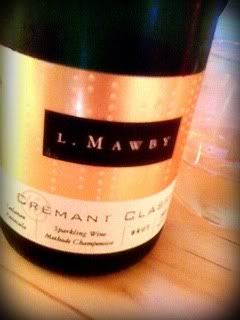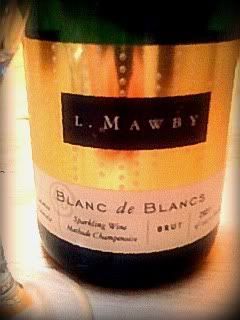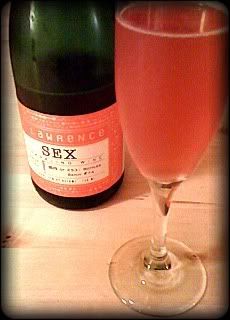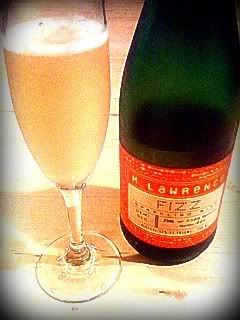Winemaking in Indiana dates back to the 18th century, although it has only recently become a going concern. According to the Indiana Wine Grape Council, there were only nine wineries in the Hoosier State in 1989. Today, there are 60. There is one American Viticultural Area in the state, the Ohio River Valley AVA. The IWGC states that Traminette is the signature grape of the state
Turtle Run Winery is in Corydon, Indiana, less than a half-hour west of Louisville, Kentucky. If you can’t imagine a turtle running, try wrapping your head around the notion that Indiana just may have some of the best terroir in the country.
Turtle Run’s owner
Jim Pfeiffer tells me his property is situated on one of the best limestone deposits in the world. That limestone is prized by builders and winemakers alike. Wherever you find grapes growing in limestone-based soil, you are likely to find some outstanding mineral characteristics in the wines made from them. “Our grapes generously provide us with incredible depth and complexity,” Pfeiffer says.
Pfeiffer also breaks down American oak to specific regions, saying that “Minnesota oak has different characteristics than oak from Ohio, Tennessee or Kentucky.” Pfeiffer helped form the
Indiana Uplands WIne Trail.
Pfeiffer proudly notes that his
Turtle Run Traminette turned up on a
list of best wines under $20 available in Indiana, a list compiled by wine writer Howard Hewitt. “There were a few American wines on the list,” says Pfeiffer, “and only one outside of the West Coast. Our Traminette was ranked as the number five wine overall.” Pfeiffer is sure that only the lack of national distribution keeps his limestone-rich terroir from being widely recognized, and he may be right. All four wines we sampled for this article were produced from grapes grown in the Pfeiffer Vineyard, in the Ohio River Valley AVA in Indiana. The samples were graciously provided by Turtle Run Winery.
Traminette 2011 (blue bottle) is produced in the traditional style, 13.1% abv and 1% residual sugar. The wine is a light golden color in the glass, with a slight effervescence upon opening which was not present on the second night it was open. Nice aromas leap from the glass, fruity with a nice slab of minerals on the side. The mouthfeel is medium-full and dry with very nice acidity, ripping acidity, in fact, when unchilled. Orange peel, melon rind and lemon-lime flavors combine with that acidity to create a very zesty, zippy wine. This is quite an impressive effort. Traminette, by the way, is a cross of Gewürztraminer and a French American hybrid.
Traminette 2011 (green bottle) is barrel-fermented, as opposed to the stainless steel treatment given the blue bottle version. At 13.1% abv, the wine is just as enjoyable, though. A beautiful, rich, golden color appears very pretty in the glass. Aromas of earthy honeysuckle, apricot and tropical fruit mix with mellow vanilla notes. There’s a slight effervescence with this Traminette, too, upon opening. This dissipates over time and disappears completely when ice cold, so don’t give it more than a bit of a chill. The ripping acidity also diminishes when too cold. The oak notes support the intense pineapple and guava flavors, and a big spiciness makes a play on the palate, as well.
Vignoles 2011 appears with a lovely golden hue in the glass, just like the barrel-fermented Traminette, but it is steel-fermented. An earthy, honey-laden apricot aroma dominates the nose, but isn’t too blustery. The grapes for this vintage were touched by Noble Rot -
Botrytis cinerea - and as a result, imparted a lovely sweet edge to this dry effort. It’s not a dessert wine by any stretch of the imagination, but it does have just enough natural sweetness from the
Botrytis to be a pure delight. As Pfeiffer says, “one unique section of our vineyard allows for us to develop Noble Rot on a regular basis.“ How lucky he is! The acidity is there, too, so this wine is loaded with good things.
Chambourcin 2010 carries a 13.9% alcohol number, and appears of medium density and color in the glass. The growing season for the Turtle Run Chambourcin grapes was marked by hot weather and drought, and both elements work in favor of rich, concentrated aromas and flavors in grapes. The nose is more fruity than spicy, and more spicy than earthy. Aromas of black cherry and black pepper come forth in a West Coast kind of way - rather unusual for a grape one is more likely to find in the Midwest or East. This French-American hybrid hits the palate with dark fruit, clove, a touch of leather and cocoa and a really nice level of acidity.
Terroir in Indiana? These four outstanding wines make a good case for it.
Follow Randy Fuller on Twitter
Follow Turtle Run Winery on Twitter


 The L. Mawby Cremant Classic is made from 100% Leelanau Peninsula Vignoles from the Cremant Vineyard. It's an impressive wine, with frothy white bubbles, sweet citrus notes and almonds on the nose, lots of nuts in the flavor profile and a pleasant lemony feel on the palate. It shows a very pleasant sensation of ginger beer on the finish. The grapes used in making this wine - and the other three I'll mention - are hand-harvested and whole cluster pressed. Only the cuvée - the initial, gently pressed juice - is used in making the Cremant Classic. It retails for $22.
The L. Mawby Cremant Classic is made from 100% Leelanau Peninsula Vignoles from the Cremant Vineyard. It's an impressive wine, with frothy white bubbles, sweet citrus notes and almonds on the nose, lots of nuts in the flavor profile and a pleasant lemony feel on the palate. It shows a very pleasant sensation of ginger beer on the finish. The grapes used in making this wine - and the other three I'll mention - are hand-harvested and whole cluster pressed. Only the cuvée - the initial, gently pressed juice - is used in making the Cremant Classic. It retails for $22. L. Mawby Blanc de Blancs - like the Cremant Classic - is also produced in the méthode champenoise. It's a non-vintage sparkler of 100% Chardonnay from the Leelanau Peninsula AVA. Only the cuvée is used and it is bottle fermented and aged a minimum of 24 months. This wine sports a nutty nose with lemon-lime citrus notes and a yeasty feel on both the nose and palate. It's bright and festive, and retails for $19.
L. Mawby Blanc de Blancs - like the Cremant Classic - is also produced in the méthode champenoise. It's a non-vintage sparkler of 100% Chardonnay from the Leelanau Peninsula AVA. Only the cuvée is used and it is bottle fermented and aged a minimum of 24 months. This wine sports a nutty nose with lemon-lime citrus notes and a yeasty feel on both the nose and palate. It's bright and festive, and retails for $19. The M. Lawrence Sex is a rosé bubbly made from 75% Pinot Noir and 25% Chardonnay grapes. This one is a tad sweeter, getting a Brut dosage of 1.4% RS. Again, only the cuvée is used, but this wine is produced using cuve closefermentation - receiving its second fermentation in a closed tank.
The M. Lawrence Sex is a rosé bubbly made from 75% Pinot Noir and 25% Chardonnay grapes. This one is a tad sweeter, getting a Brut dosage of 1.4% RS. Again, only the cuvée is used, but this wine is produced using cuve closefermentation - receiving its second fermentation in a closed tank. Fizz is also under the M. Lawrence label, and it's their sweetest sparkling wine. Produced from 75% Pinot Noir and 25% Chardonnay grapes, Fizz differs from the other three L. Mawby wines I tasted, in that the tailles juice is used - the second fraction of juice pressed, after cuvée - and it's finished with a Demi-Sec dosage, 3.5% RS.
Fizz is also under the M. Lawrence label, and it's their sweetest sparkling wine. Produced from 75% Pinot Noir and 25% Chardonnay grapes, Fizz differs from the other three L. Mawby wines I tasted, in that the tailles juice is used - the second fraction of juice pressed, after cuvée - and it's finished with a Demi-Sec dosage, 3.5% RS.